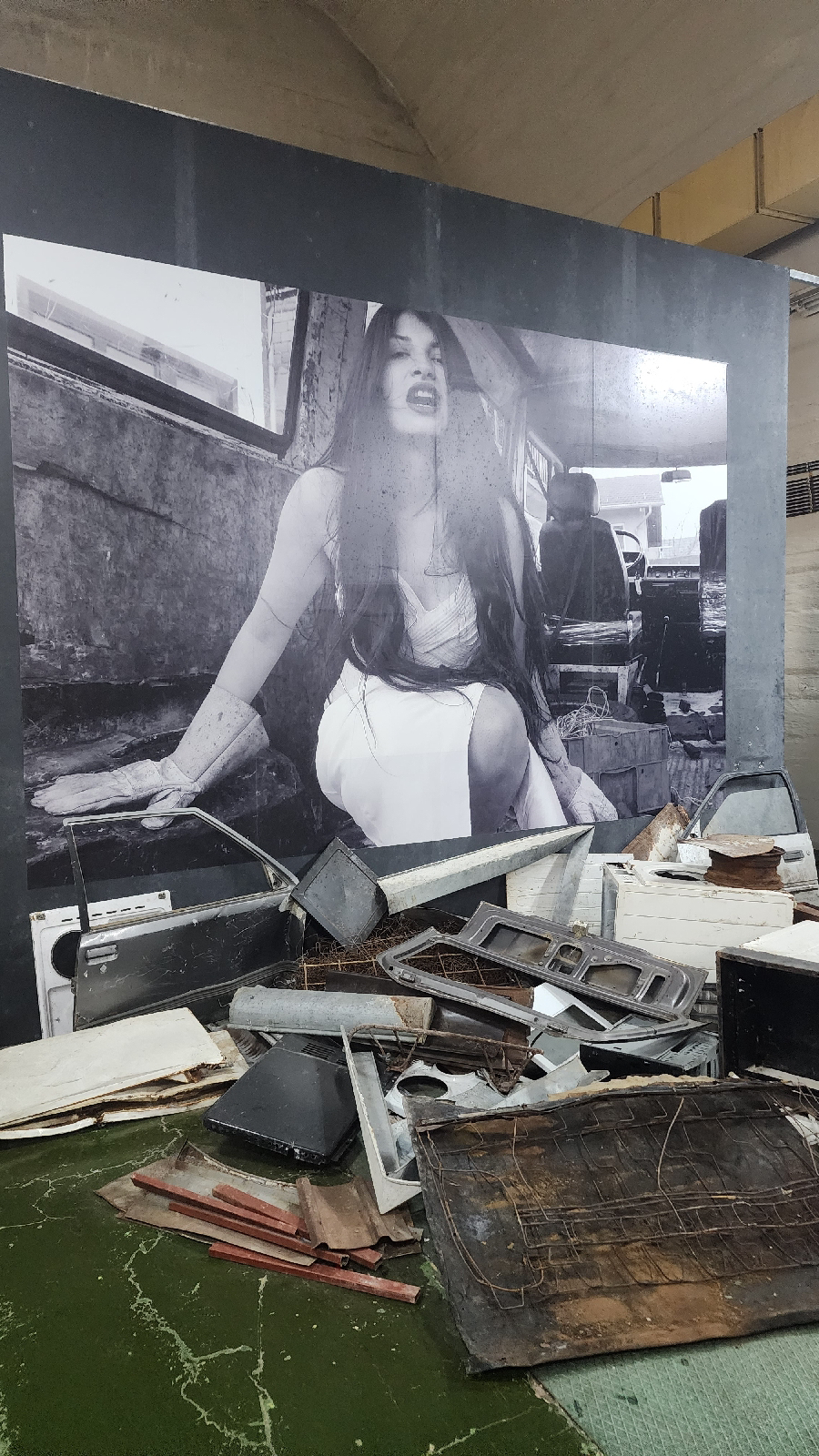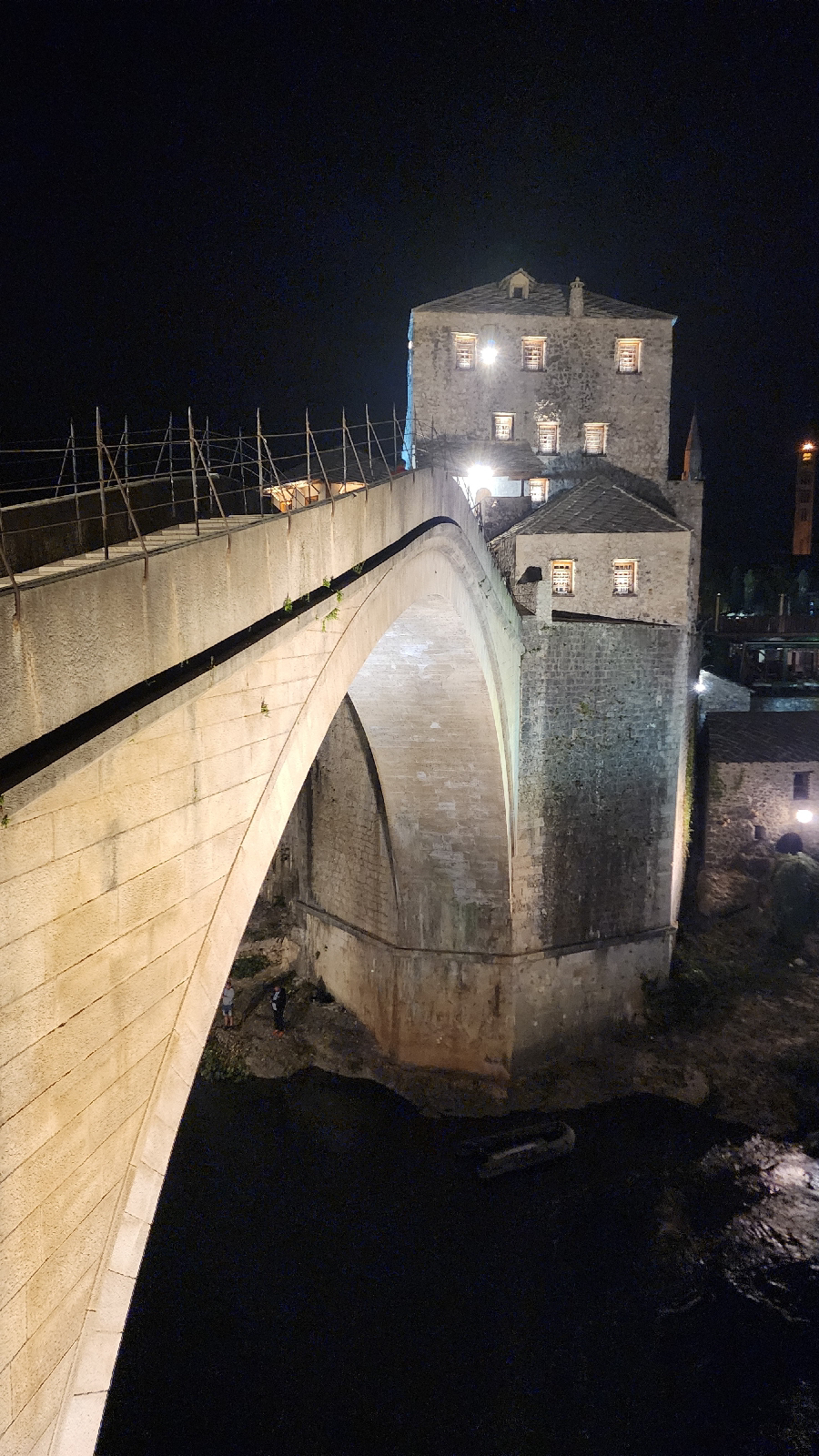In 1953, as the Cold War was heating up, President Tito directed the Yugoslav People's Army (JNA) to begin work on the ARK bunker. In the event of nuclear war, the complex was designed to function as a centre of military operations and a shelter for both the Supreme Command staff and Tito, along with his family and close associates. Its construction and existence were among the most closely guarded Yugoslav military secrets of the time[7] and remained so until the 1990s, when the ARK was revealed to the public.[5]
In 1979, when work was completed after 26 years and US$4.6 billion in construction costs[3][7] (equal to $18.5 billion in today's currency), the facility was handed over to a JNA detachment of 16 military personnel (nine Serbs, four Bosniaks, and three Croats)[6] tasked with maintaining the structure, should the need to use it ever arise.
After Tito's death in 1980, the complex was mothballed but kept ready in case of war. In March 1992, during the breakup of Yugoslavia, the JNA general Milutin Kukanjac ordered its demolition to deny it to the government of Bosnia and Herzegovina. As with Željava Air Base, it was prepped for destruction and rigged with explosives, but two military personnel sabotaged the plan by breaking the wires during evacuation. The military detachment later surrendered the structure to the Bosnian government. It was subsequently used as a supply base by the Republic of Bosnia and Herzegovina during the Bosnian War, as medical supplies and equipment were in short supply.[8]
Construction
Built between 1953 and 1979[3][5] inside Zlatar Hill at the southern foothills of Bjelašnica Mountain,[7] the ARK is the largest nuclear shelter,[4] and one of the largest underground facilities, ever built in the former Yugoslavia.[5] For over a decade after its completion, it was the most secret military installation in the country.[3] All construction workers were carefully vetted, signing a confidentiality contract, and all staff members held the highest security clearance.[3]
Visible from the outside of the complex are three nondescript houses, not marked on any map, in an isolated natural setting located along the Neretva River. For nearly 50 years, the houses concealed entrances to the third largest military facility in Yugoslavia (after the underground Željava Air Base near Bihać and the Lora naval facility in Split, Croatia).[3] The houses consist of a control residence, a building containing secure communication links, and a facility for technical support personnel. Along a corridor located in the first house, three 1.2-meter-thick metal doors protect a tunnel leading to the heart of the shelter, which is 280 meters deep and 202 meters long.[3]
The underground horseshoe-shaped structure, built to withstand a 20-kiloton nuclear blast, is divided into 12 interconnected blocks, the most important being Blocks 6 (communication), 8 (Tito's block), 9 (air filtration), 10 (fuel storage), and 11 (water storage). Designed to protect and accommodate up to 350 people[5] for up to six months,[3] the bunker covers an area of 6,854 m² and contains over 100 rooms, including dormitories, two large conference rooms, five operation centres that contained direct phone links to the Presidency, two kitchens, five large bathrooms, a cryptography centre, cable television access, and a fully equipped hospital operating room. President Tito's residence consists of five rooms: one for his secretary and party leaders, Tito's office, his bedroom, from which one could enter the room of Yugoslav First Lady Jovanka Broz, and a relaxation room.
Within the structure are 21 large systems and maintenance rooms[3] with containers capable of holding 50 tons of oil, climate control systems, 170-cubic-meter water tanks, and running water drawn from natural wells located within the mountain. Each system was equipped with a backup in case the primary failed. The temperature in the bunker is between 21 and 23 degrees Celsius, with humidity between 60% and 70%, representing near-optimal subterranean living conditions. The complex is lit by approximately 6,000 neon bulbs.




















No comments:
Post a Comment